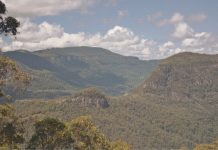Answers
- (a) See ERC L4
- (d) Aeronautical chart user guide, 6.2.2, notes on page 19
- (b) AIP GEN 2.2 – 15 definitions / ENR 1.1 – 1, Para 2.2.1 / 2.2.1.1
- (c)
- (e) Class E LL is 8500 so you are in Class G. Class C LL is FL125
- (c) See ERC LOW chart legend
- (c) AIP ENR 1.7-7, Para 4.2.1
- (d) Aeronautical chart user guide page 24, Para 6.4.1
- (a) Aeronautical chart user guide page 24. Para 6.4.1. Z route specification is area navigation
- (b) AC91-05, page 5 and 6
- (a) CASR Part 91 plain English guide, page 102. Airservices Aeronautical chart user guide 6.4.2, page 25
- (b) AIC 91-05 (page 18)
- (d) CASR 175
- (a) CASR 175
- (d) Aeronautical chart user guide 3.2.2




I’ll just reach into my flight bag of IFR and VFR charts covering all of Australia to come up with these answers to questions like:
Overhead Bundaberg (YBUD), climbing into Class E airspace, what frequency should be contacted for clearance?
BN CEN 124.1
BN CEN 121.2
Bundaberg 124.1
BN CEN 135.2
Airway W636 for navigation between YBUD and YGLA is available for:
tracking to the north only
tracking to the south only
tracking in both directions at all levels
tracking in both directions OCTA only
Airway Z84 to Bundaberg is:
an area navigation route
not an area navigation route
available in Class E airspace only
available for operations OCTA only
At least provide the reference materials (IFR charts) so we readers can look at them. I do not maintain a worldwide coverage nor even an Australia-wide coverage, just what I need and can afford to maintain current.
Think like a Pilot.
Good reminder of the complexity of the airspace we operate in and the variety of documents we need to access to obtain complete information.